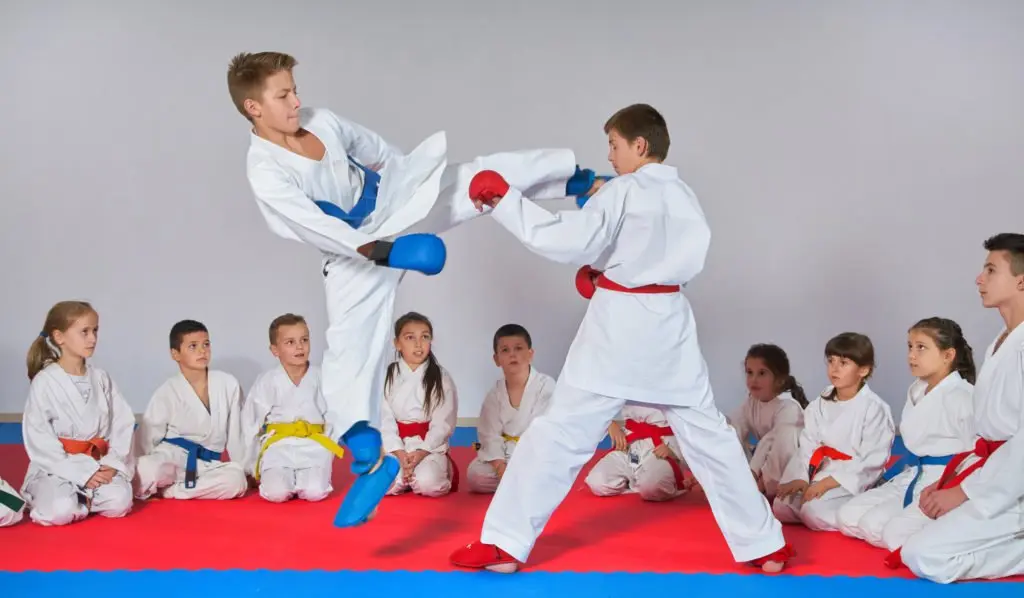What is Sparring? A Comprehensive Guide
Sparring is a fundamental aspect of many combat sports and martial arts, serving as a crucial training method for athletes. This article will explore the concept of sparring in depth, including its definition, purpose, types, techniques, and safety considerations. Additionally, we will discuss its role in various martial arts disciplines, provide tips for effective sparring, and answer frequently asked questions.
Table of Contents
- Definition of Sparring
- Purpose of Sparring
- Types of Sparring
- 3.1. Light Sparring
- 3.2. Full Contact Sparring
- 3.3. Controlled Sparring
- 3.4. Technical Sparring
- Sparring Techniques
- Safety Considerations
- Sparring in Different Martial Arts
- 6.1. Boxing
- 6.2. Brazilian Jiu-Jitsu
- 6.3. Karate
- 6.4. Taekwondo
- 6.5. Mixed Martial Arts (MMA)
- Tips for Effective Sparring
- Conclusion
- FAQ Section
- References
1. Definition of Sparring
Sparring is a form of training in combat sports and martial arts where two practitioners engage in simulated combat. Unlike competitive fights, sparring is typically conducted in a controlled environment with specific rules and guidelines to ensure the safety of both participants. The primary goal of sparring is to practice techniques, improve skills, and gain experience in a realistic setting.
2. Purpose of Sparring
Sparring serves several important purposes in martial arts training:
- Skill Development: Sparring allows practitioners to apply techniques learned in class against a resisting opponent, helping to improve timing, distance management, and reaction speed.
- Realistic Practice: It provides a more realistic training environment compared to drills or shadow boxing, allowing athletes to experience the pressure and unpredictability of a real fight.
- Conditioning: Sparring helps improve cardiovascular fitness, strength, and endurance, as it often involves high-intensity physical activity.
- Mental Preparation: Engaging in sparring helps athletes develop mental toughness, focus, and the ability to remain calm under pressure.
3. Types of Sparring
Sparring can be categorized into various types based on the intensity, contact level, and purpose. Here are some common types of sparring:
3.1. Light Sparring
Light sparring involves minimal contact and is primarily focused on technique and skill development. Participants engage in controlled exchanges, allowing them to practice their movements without the risk of injury. This type of sparring is often used by beginners or during warm-up sessions.
3.2. Full Contact Sparring
Full contact sparring involves a higher level of intensity and allows for strikes and techniques to be executed with full force. This type of sparring is common in sports like boxing and kickboxing, where athletes need to prepare for real competition. Protective gear is often worn to minimize the risk of injury.
3.3. Controlled Sparring
Controlled sparring is a middle ground between light and full contact sparring. Participants are encouraged to apply techniques with a moderate level of intensity while adhering to specific rules regarding target areas and techniques. This type of sparring allows for realistic practice while maintaining safety.
3.4. Technical Sparring
Technical sparring focuses on specific techniques or strategies rather than free-form fighting. Practitioners may work on particular skills, such as grappling transitions or striking combinations, in a controlled environment. This type of sparring is often used to refine techniques before applying them in more intense sparring sessions.
4. Sparring Techniques
Sparring techniques vary depending on the martial art being practiced. However, some common techniques and strategies include:
- Footwork: Effective footwork is essential for maintaining distance and positioning during sparring. Practitioners should practice moving in and out of range while maintaining balance.
- Defensive Techniques: Learning how to block, parry, and evade strikes is crucial for sparring. Practitioners should incorporate defensive movements into their sparring sessions.
- Combination Strikes: Practicing combinations of strikes, such as punches and kicks, helps improve fluidity and timing during sparring.
- Grappling Techniques: In grappling-based arts, practitioners should focus on takedowns, submissions, and positional control during sparring.
- Mindset and Strategy: Developing a strategic approach to sparring, including reading opponents and adapting to their movements, is essential for success.
5. Safety Considerations
Safety is paramount during sparring to prevent injuries. Here are some key safety considerations:
- Protective Gear: Participants should wear appropriate protective gear, such as headgear, mouthguards, gloves, shin guards, and chest protectors, depending on the martial art.
- Supervision: Sparring sessions should be supervised by a qualified instructor who can enforce rules and ensure safety.
- Clear Rules: Establishing clear rules regarding target areas, techniques, and contact levels is essential to minimize the risk of injury.
- Communication: Practitioners should communicate openly with their sparring partners about comfort levels and any injuries or concerns.
- Warm-Up and Cool Down: Proper warm-up and cool-down routines help reduce the risk of injury and improve overall performance.
6. Sparring in Different Martial Arts
Sparring practices vary widely across different martial arts disciplines. Here’s a look at how sparring is approached in some popular martial arts:
6.1. Boxing
In boxing, sparring is a fundamental part of training. Boxers engage in both light and full contact sparring to develop their skills, timing, and strategy. Protective headgear and gloves are typically worn during sparring sessions to minimize injuries.
6.2. Brazilian Jiu-Jitsu
Sparring in Brazilian Jiu-Jitsu (BJJ) is often referred to as “rolling.” BJJ sparring focuses on grappling techniques, submissions, and positional control. Unlike striking arts, BJJ sparring is generally full contact but does not involve striking, which helps reduce the risk of injury.
6.3. Karate
Karate sparring, known as “kumite,” can vary in intensity and rules depending on the style. Some schools emphasize point sparring, where participants score points for controlled strikes, while others may engage in full-contact sparring.
6.4. Taekwondo
Taekwondo sparring often involves fast-paced kicking techniques. Participants wear protective gear, and sparring can be either light or full contact, depending on the rules of the competition or training session.
6.5. Mixed Martial Arts (MMA)
MMA sparring incorporates techniques from various martial arts disciplines, including striking and grappling. Sparring sessions in MMA may involve full contact and often require participants to wear protective gear. Due to the high intensity, safety precautions are crucial.
7. Tips for Effective Sparring
To make the most of your sparring sessions, consider the following tips:
- Stay Relaxed: Tension can hinder your performance. Focus on staying relaxed and fluid in your movements.
- Focus on Technique: Use sparring as an opportunity to practice and refine your techniques rather than just trying to win.
- Be Aware of Your Partner: Pay attention to your sparring partner’s movements and adjust your strategy accordingly.
- Practice Controlled Contact: Especially in light sparring, aim for controlled contact to minimize the risk of injury while still challenging yourself.
- Reflect on Your Performance: After each sparring session, take time to reflect on what worked well and what areas need improvement.
8. Conclusion
Sparring is an essential component of martial arts training, providing practitioners with the opportunity to apply techniques in a realistic setting. By understanding the different types of sparring, safety considerations, and effective techniques, individuals can enhance their skills and prepare for competition or self-defense situations. Whether you are a beginner or an experienced martial artist, sparring offers valuable lessons and experiences that contribute to your growth.
9. FAQ Section
Q1: What is the main purpose of sparring?
A1: The main purpose of sparring is to practice techniques in a realistic setting, improve skills, and develop mental toughness.
Q2: Is sparring safe?
A2: Sparring can be safe when proper precautions are taken, such as wearing protective gear and following established rules.
Q3: How often should I spar?
A3: The frequency of sparring depends on your training goals and experience level. Beginners may spar less frequently, while advanced practitioners may spar regularly.
Q4: Can I spar if I’m a beginner?
A4: Yes, beginners can spar, but it’s essential to start with light sparring and under the supervision of an experienced instructor.
Q5: What should I wear during sparring?
A5: Appropriate protective gear, such as gloves, headgear, and shin guards, should be worn during sparring to minimize the risk of injury.
10. References
For more information about sparring and its role in martial arts, you can refer to the Wikipedia page on sparring here.



